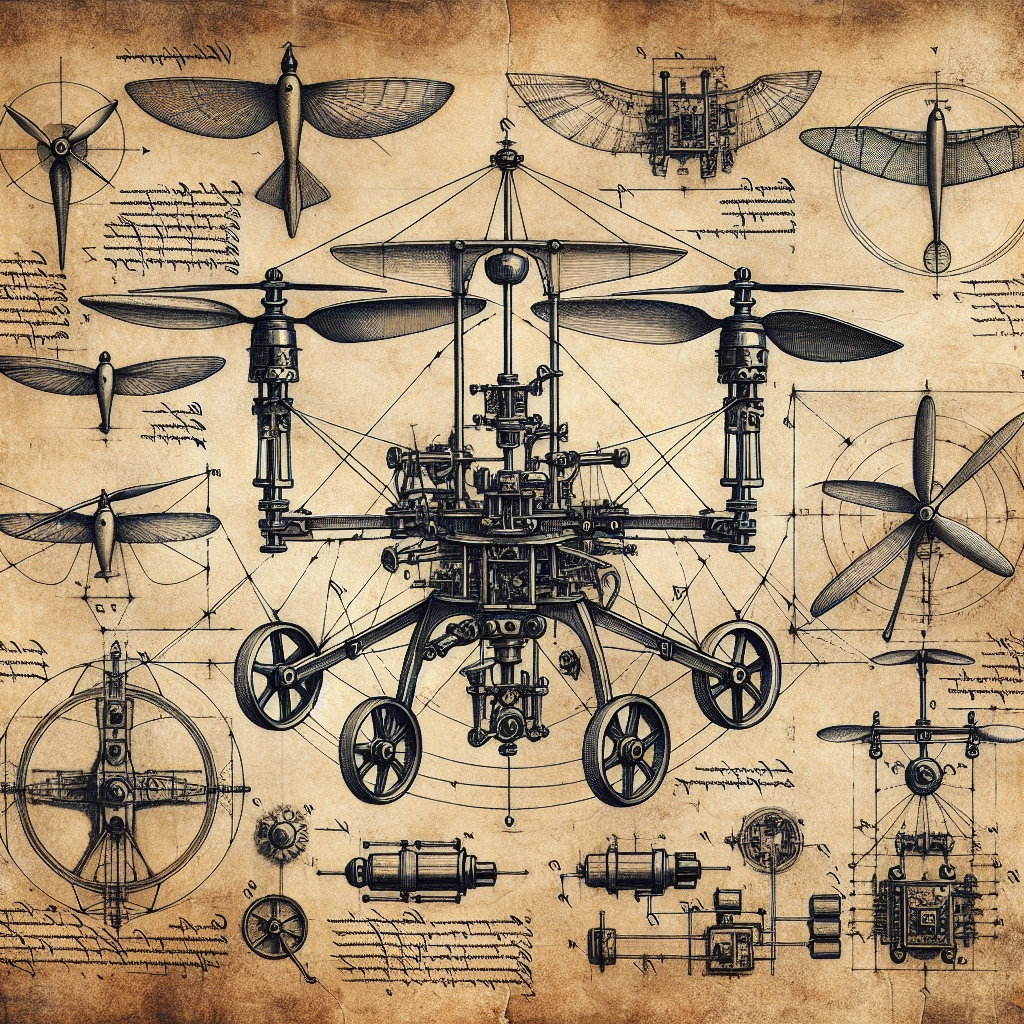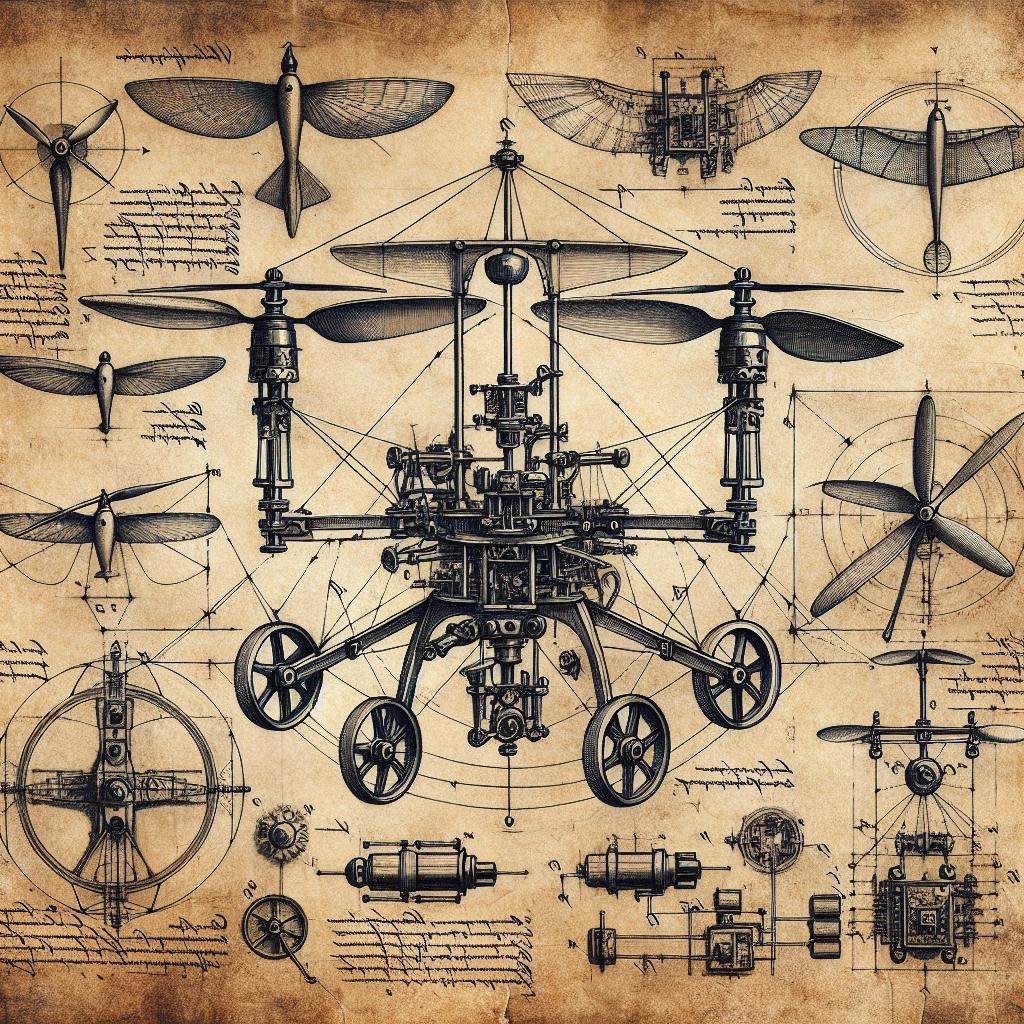The Mechanics of Flight: How Do Drones Fly?
 Quantum Cyber Solutions
Quantum Cyber Solutions

Published on
Friday, May 29, 2020
The Mechanics of Flight: How Do Drones Fly?
===============================================
Authors

Name
Eric deQuevedo 😄
Twitter
🚁 The Mechanics of Flight: How Do Drones Fly? 🚁
Drones, also known as unmanned aerial vehicles (UAVs), have become a common sight in the sky, used for everything from aerial photography and surveillance to delivery services and recreational flying. But have you ever wondered how these sophisticated devices manage to stay airborne and navigate with precision? Let's dive into the mechanics and technology behind how drones fly and explore the components that make it possible.
🔬 The Science of Drone Flight 🔬
Drones achieve flight through a combination of aerodynamics, propulsion, and advanced electronics. Understanding these principles helps explain how drones can maneuver so effectively.
🧠 How Drones Fly 🧠
- Lift and Thrust: The primary forces that enable a drone to fly are lift and thrust. Lift is generated by the drone's propellers, which create a difference in air pressure above and below the blades, causing the drone to rise. Thrust propels the drone forward, backward, or sideways.
- Propellers and Rotors: Most drones use multiple propellers (often four, in a quadcopter configuration) to generate lift and thrust. The speed and direction of each propeller can be adjusted independently to control the drone's movement.
- Stability and Control: Advanced gyroscopes and accelerometers onboard the drone help maintain stability and control. These sensors detect changes in the drone's orientation and movement, allowing the flight controller to make real-time adjustments to the propellers.
🌍 Key Components of a Drone 🌍
Several essential components work together to enable a drone to fly and navigate.
🔋 Power Source:
- Batteries: Most drones are powered by rechargeable lithium-polymer (LiPo) batteries, which provide the necessary energy to the motors and electronic components.
⚙️ Flight Controller:
- Central Processor: The flight controller acts as the brain of the drone, processing data from the sensors and user inputs to control the motors and maintain stable flight.
- Sensors: Gyroscopes, accelerometers, GPS, and other sensors provide crucial data for navigation and stability.
🌐 Remote Control and Communication:
- Remote Transmitter: Pilots use a remote controller to send commands to the drone. This controller communicates with the drone via radio signals, typically using frequencies like 2.4 GHz or 5.8 GHz.
- FPV (First-Person View): Many drones are equipped with cameras that transmit live video feed to the pilot, providing a first-person view for more precise control and navigation.
🛠️ Frame and Structure:
- Lightweight Materials: Drones are constructed from lightweight materials like carbon fiber or plastic to maximize flight efficiency and maneuverability.
- Aerodynamic Design: The design of the drone's frame and propellers is optimized for minimal air resistance and maximum lift.
🌟 The Versatility of Drones 🌟
Drones have revolutionized various industries, offering capabilities that were previously impossible or impractical.
📸 Aerial Photography and Videography:
- Capturing Unique Perspectives: Drones equipped with high-resolution cameras can capture stunning aerial footage and images, providing unique perspectives for filmmakers, photographers, and surveyors.
🚀 Delivery Services:
- Efficient Transport: Companies like Amazon and UPS are exploring the use of drones for delivering packages quickly and efficiently, especially in remote or hard-to-reach areas.
🌾 Agriculture:
- Precision Farming: Drones are used in agriculture for monitoring crops, spraying pesticides, and collecting data to optimize farming practices.
🕵️ Surveillance and Inspection:
- Monitoring and Safety: Drones are employed for surveillance, inspection of infrastructure (like bridges and power lines), and search and rescue operations.
🌟 The Future of Drone Technology 🌟
As technology advances, drones are becoming more capable, efficient, and accessible. Innovations in battery life, autonomous navigation, and artificial intelligence are paving the way for even more sophisticated and versatile drones.
Next time you see a drone soaring through the sky, you'll understand the intricate mechanics and advanced technology that make its flight possible. Let's celebrate the marvels of drone engineering and the fascinating science that keeps these flying machines aloft.
Discuss on Twitter • View on GitHub
Tags
Drones
Flight
Aviation
Technology
Engineering
Questions
Previous Article
How Do Electric Eels Generate Electricity? : The Shocking Truth
Next Article
Sleeping Underwater: How Do Dolphins Sleep Without Drowning?
Subscribe to my newsletter
Read articles from Quantum Cyber Solutions directly inside your inbox. Subscribe to the newsletter, and don't miss out.
Written by
